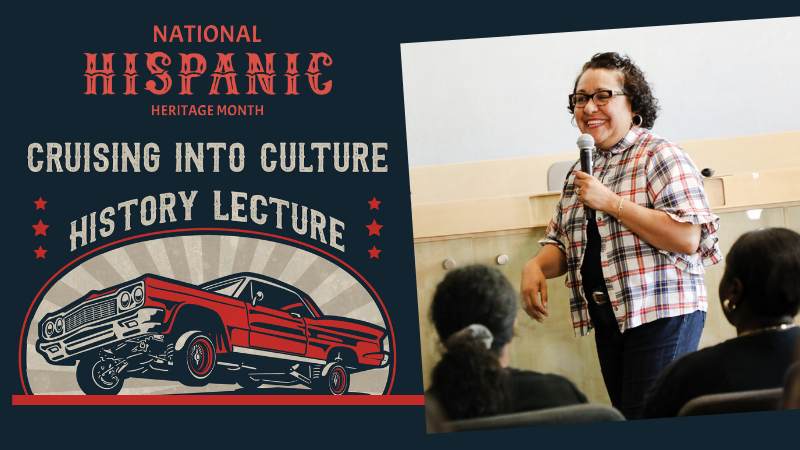In celebration of Hispanic Heritage Month, Norco College recently welcomed Dr. Nancy Quiñones for Cruising into Culture, a cultural studies lecture that celebrated the legacy of lowriders and their lasting influence on art, identity, and community.
Quiñones began with the history of classic cars, highlighting the Chevrolet Impala, Buick Regal, and Oldsmobile Cutlass Supreme—models that became iconic canvases for self-expression. From chrome details to carefully designed interiors, these vehicles became more than cars; they became works of art.
The lecture showed how lowriders gained recognition in museums and cultural centers, including the Mission Cultural Center for Latino Arts in San Francisco, and how artists such as Gilbert “Magu” Luján, Frank Romero, Judith Baca, and Justin Favela drew inspiration from car culture. Creativity extended well beyond automobiles, appearing in lowrider bikes, skateboards, chairs, surfboards, and even piñatas.
Quiñones also spotlighted the Mexicali Bike Club and the global reach of lowrider culture, stretching to Osaka, Japan, and Thailand. In discussing the broader art movement, she highlighted the role of ASCO, an East Los Angeles-based Chicano conceptual and performance art collective active from 1972 to 1987. Formed by Harry Gamboa Jr., Gronk, Willie Herrón, and Patssi Valdez, ASCO (Spanish for “nausea” or “disgust”) used provocative street performances, photography, and conceptual art to challenge stereotypes and injustices faced by the Chicano community. By expanding Chicano art beyond traditional forms, ASCO helped frame lowrider culture as both social commentary and cultural celebration.
The talk also explored the social and political dimensions of car culture. Quiñones connected the pride and creativity of lowriders to struggles with redlining, forced assimilation, deportation policies, and systemic inequities. From the Treaty of Guadalupe Hidalgo in 1848 to Operation Wetback in the 1950s, she illustrated how communities of color turned hardship into beauty.
Lowrider identity was also tied to broader movements of resistance, including the Pachucas & Pachucos, the Zoot Suit Riots, and the student Walkouts, which reshaped education for Mexican American students in Los Angeles.
The key takeaway: lowrider culture is not only about cars—it is about resilience, joy, and the power of turning oppression into creativity. “Communities of color have always created their own culture,” Quiñones said, reminding the audience that what began as a response
